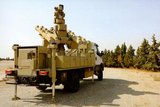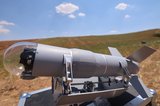Seven EU member states, a consortium composed of European companies and the European Commission signed last week a €32,6 million ($ 39.68 million) agreement for the Integrated Modular Unmanned Ground System (iMUGS), a project aimed at developing the European standard unmanned ground system (UGS).
The deal will allow the consortium to begin work on the project. The cooperation is led by Estonia and Milrem Robotics and composed of several major European defence, communication and cybersecurity companies and high technology SMEs.
Martin Jõesaar, Chief of Project Office in the Estonian Centre for Defence Investment claimed that the goal is not only making iMUGS a one-time effort but to design it into a base project for future developments.
‘Our long-term goal is that each of the modular systems built will pave a way for further innovation in its field,’ Jõesaar noted.
Kuldar Väärsi, CEO of Milrem Robotics pointed out that iMUGS will be a modular and scalable solution that will not only fill the needs of Europe but will be also deployable worldwide.
In his point of view, this is an excellent example of cooperation in Europe. ‘Seven countries have created common requirements for a future robotic system and have a common understanding of how the system is to be deployed,’ Väärsi highlighted.
The prerequisites for the standardised UGS have been set by Belgium, Estonia, Finland, France, Germany, Latvia and Spain, that are collectively financing €2 million ($2.43 million) of the total budget. The award of this agreement was announced in July.
The Milrem's Tracked Hybrid Modular Infantry System (THeMIS) will form the basis of the iMUGS. THeMIS (pictured) is a hybrid UGV with modular design and open architecture.
The first demonstration of iMUGS is planned for the second quarter of 2021 and will be held in Estonia.
In addition to Milrem Robotics, this consortium includes GT Cyber Technologies, Safran Electronics & Defense, NEXTER Systems, Krauss-Maffei Wegmann, Diehl Defence, Bittium, Insta DefSec, (Un)Manned, dotOcean, Latvijas Mobilais Telefons, GMV Aerospace and Defence and Royal Military Academy of Belgium.
THeMIS






















